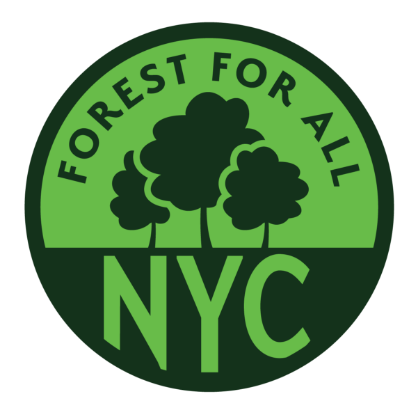BY Caleb Smith BKReader
New York City Mayor Eric Adams’ pledge to support urban forests and our city’s open spaces doesn’t square with his recent budget proposals.
As a member of Forest for All NYC, we’ve advocated for many policies and legislation to strengthen and support urban forests. We’ve pushed for a citywide goal of at least 30% tree canopy, regular monitoring of the urban forests in the city’s long-term resiliency efforts and the city’s first Urban Forest Plan. We’ve been gratified to see Mayor Adams support these initiatives by including them in his most recent PlaNYC update and signing historic legislation last year.
That’s why this year’s budget negotiations have been so disheartening. While the mayor has made great strides to protect urban forests, his proposed cuts to the New York City Department of Parks and Recreation threaten our incredible progress.
Compared to last year’s budget, the proposed 2025 budget cuts $55 million from NYC Parks. This cut impacts hundreds of essential jobs held by New Yorkers who work to protect and maintain our greenspaces and parks and jeopardizes a greener, healthier, and more resilient New York City.
The reality is that New York is acutely vulnerable to extreme heat events. A recent study found that New York City has the worst urban heat island effect in the country. About 72% of New York’s built environment consists of concrete and asphalt, materials that absorb heat and amplify it back into our air, creating an urban heat island effect. This results in New York’s temperatures measuring up to nine degrees Fahrenheit hotter than our surrounding rural areas.
Climate change does not impact everyone equally, with people of color and low-income experiencing a far greater burden. For example, in New York City, Black residents are twice as likely to die from heat stress associated with extreme heat, the deadliest impact of climate change, than their white counterparts.
One of the reasons for this is that communities of color and low-income often have lower tree canopy cover, making them subject to a hyper-local urban heat island effect. This effect exposes these residents to temperatures as much as 10 degrees hotter than the city average. Persistent hot and humid temperatures can make breathing more difficult and heighten the risk of common asthma triggers. The most at-risk areas for extreme heat are also some of the poorest areas in New York City where the majority of residents are majority Black and Latinx.
Policies of the past failed to address these inequities by discouraging investment in communities of color. The resulting lack of tree coverage, disparities in generational wealth, and poor building maintenance render both the inhabitants and the built environment ill-equipped to withstand extreme weather events that will only become more severe and frequent as climate change persists.
With the right plan and investment, this administration can fix this.
Expedient investment toward these goals is essential. The sooner we start, the sooner we can put tree planting, maintenance, and protection in place to ensure our communities have mature trees to provide heat mitigation, air pollution reduction, and stormwater retention benefits. Delaying investment in green spaces limits their resilience potential and increases the long-term physical and financial costs to our city. We must also invest adequately in regular maintenance and in the workers who take care of the urban forest in order to keep existing mature trees alive and prevent the loss of saplings. Without proper maintenance, our tree canopy may take longer to mature, become more disease-prone, or at worst die creating safety hazards when limbs or trunks fall.
Cuts to NYC Parks move us farther from the mature urban canopy New York City desperately needs, and from reaching a 30% canopy cover citywide in an equitable way by 2035.
Mayor Adams: please make the humane, climate-informed, and fiscally responsible choice to fully fund our parks, protect our urban forests, and help safeguard our communities from extreme heat!
Original article here.
